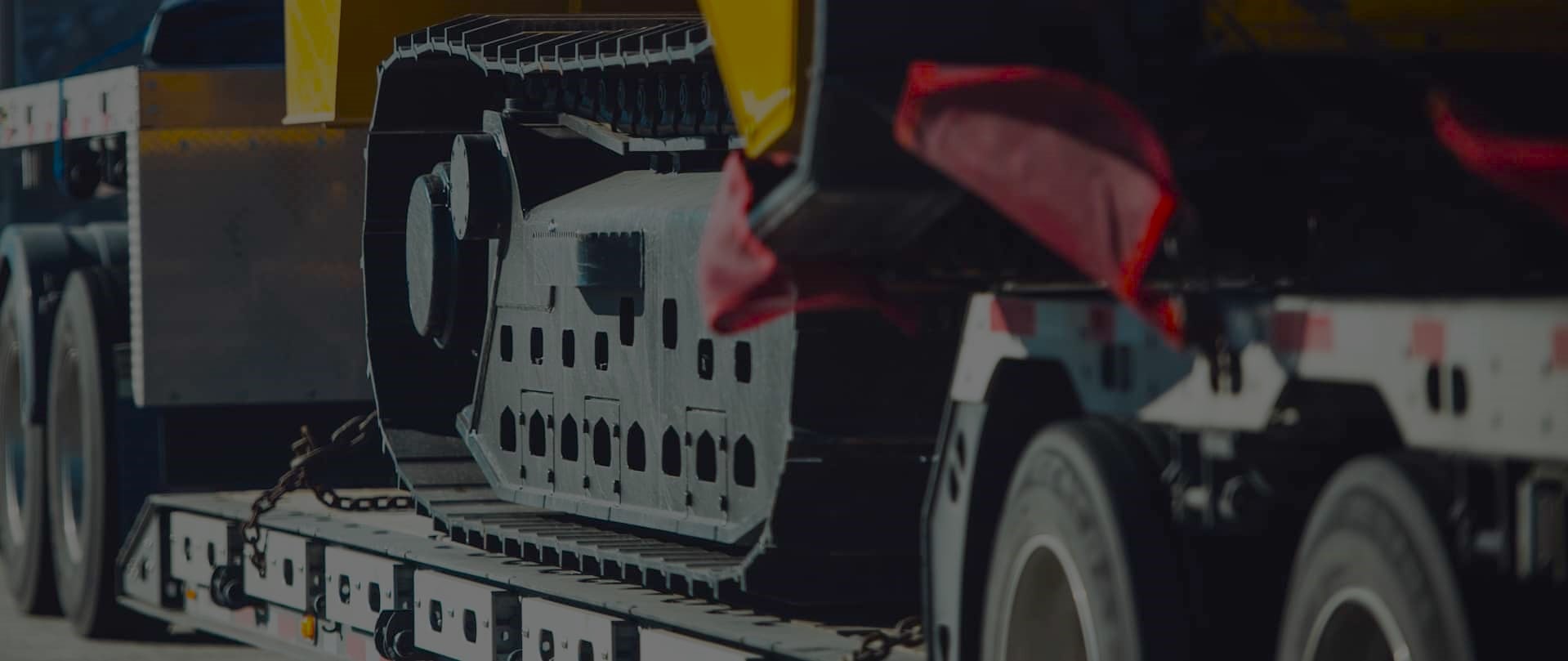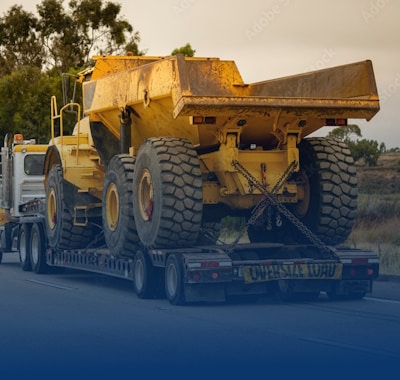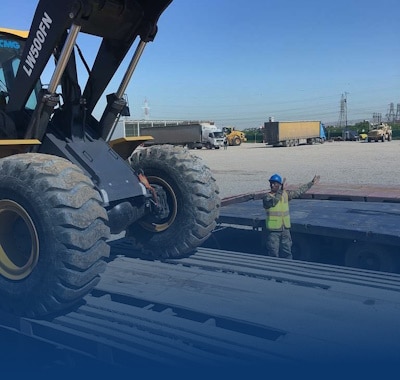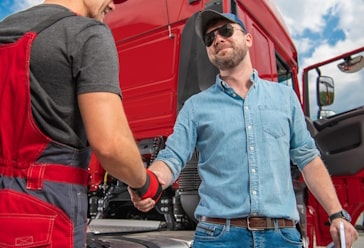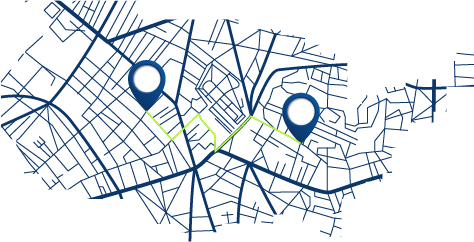Wide Load Hauling: Real-Time Route Monitoring & Safety
Freedom Heavy Haul can offer expedited Pickup and Delivery for any size shipment anywhere in the USA. Contact us today for No Hassle, No Pressure Pricing.
Transporting oversized loads is a complex task. It needs careful planning, special equipment, and strict safety rules. As a professional, you know how crucial real-time monitoring and following rules are. This guide will cover the basics of wide load transport, the key technology and equipment, and the best practices for this field.
Oversized load transport deals with cargo that’s bigger and heavier than usual. It comes with its own set of risks and challenges. With real-time monitoring and safety features, you can overcome these obstacles. Tools like GPS, traffic updates, digital documents, and permit management can change how you handle wide load hauling.
Understanding Wide Load Transportation Fundamentals
Wide load hauling is complex, needing a good grasp of legal rules, cargo types, and industry standards. It involves moving big items like construction equipment and industrial machinery. These oversized loads are key for our nation’s growth and infrastructure.
Legal Classifications of Oversized Loads
“Wide load” means cargo that’s too big for regular roads. Wide load regulations come from both federal and state laws. They cover size, weight, and who must escort the load. Knowing these rules is crucial for getting the right permits and following the law.
Common Types of Wide Load Cargo
- Construction equipment (e.g., cranes, bulldozers, excavators)
- Manufactured housing and modular buildings
- Industrial machinery and manufacturing components
- Oversized raw materials (e.g., steel beams, lumber, pipes)
- Specialized vehicles (e.g., military tanks, wind turbine blades)
Industry Regulations and Compliance Standards
Moving oversized loads must follow strict safety rules. These rules vary by place and are vital for getting permits and avoiding fines. Knowing these wide load regulations well is essential for hauling success.
Essential Equipment and Technology for Wide Load Transport
For safe and efficient wide load transport, the right tools and tech are key. The industry uses GPS tracking and load securement tools to ensure a smooth journey. These solutions help keep the load safe and on track.
A GPS tracking system is vital for wide load haulers. It gives real-time updates on the load’s location and status. This lets operators monitor the journey and quickly handle any problems. GPS also helps plan the safest and most efficient routes for oversized cargo.
- Robust GPS tracking systems with live update capabilities
- Specialized wide load transport equipment designed for stability and security
- Innovative load securement tools to ensure proper tie-down and stabilization
- Advanced communication systems for coordination with escort vehicles and authorities
Wide load transport also uses specialized wide load transport equipment and load securement tools. This includes sturdy trailers, tie-down mechanisms, and load monitoring devices. The right equipment makes operations safer and more efficient, reducing the risk of accidents or cargo shifting.
“Proper equipment and technology are essential for the safe and successful transport of wide loads. Cutting-edge solutions like GPS tracking and specialized securement tools help ensure a smooth and efficient journey, no matter the size or complexity of the cargo.”
The wide load transport industry is always changing. Keeping up with new technologies and equipment is crucial. By doing so, haulers can improve safety, efficiency, and deliver oversized cargo with confidence.
Wide load hauling with real-time route monitoring and compliance checks
In the world of wide load transportation, keeping track of routes and checking for compliance is key. Advanced technologies like GPS tracking for wide loads and digital permits help. They let companies manage the complex needs of hauling oversized cargo.
GPS Integration and Route Planning
Using GPS tracking for wide loads lets you watch your vehicle’s location and speed in real-time. This info helps plan the best routes, avoiding road restrictions and weight limits. With GPS, you can avoid delays and get your wide load to its destination on time.
Real-Time Traffic Updates and Alerts
Traffic jams, road closures, or weather can slow down wide loads. Real-time route monitoring keeps you updated. This way, you can change your route or plan to avoid problems.
Digital Documentation and Permit Management
Handling the paperwork for wide loads can be tough. Digital permit management makes it easier. It keeps all your documents up-to-date and accessible. This simplifies compliance and reduces the chance of fines.
Real-time route monitoring, GPS tracking, and digital permits make wide load transport better. They help companies manage the industry’s challenges safely and efficiently. Using these technologies means you can deliver oversized cargo with confidence.
Safety Protocols and Best Practices in Oversized Load Movement
Transporting wide loads or oversized cargo always puts safety first. Following wide load safety measures and oversized cargo best practices is key. This ensures a safe and successful load transport safety journey.
Before you start, do a detailed risk assessment. Look at road conditions, weather, and traffic. Then, plan how to avoid or handle these risks.
It’s also vital to train your drivers well. They need to know how to handle big, hard-to-control vehicles. Give them regular training to keep their skills up.
Make sure your vehicles have the right safety gear. This includes flashing lights, reflective signs, and safety flags. These help make your load more visible and lower accident risks. Also, check your vehicles before each trip and do regular maintenance to catch and fix problems early.
“Safety is not just a priority, it’s a non-negotiable requirement in the world of wide load transportation.”
Following these safety steps and practices helps reduce risks in oversized load transport. This way, you can deliver your cargo safely and efficiently.
Planning Your Wide Load Route: Strategic Considerations
Planning a wide load route is key to safe and efficient transport. You need to think about bridge clearance checks and alternative transport routes. Every detail matters to avoid delays and risks.
Bridge Clearance and Weight Restrictions
When planning, make sure your cargo can clear bridges safely. Doing bridge clearance checks is crucial. Not checking can lead to detours, fines, or damage.
Weather Impact Assessment
Weather can affect your transport. Watch the forecast for high winds, rain, or snow. You might need to change your route to stay safe.
Alternative Route Planning
- Having alternative transport routes is important for unexpected issues.
- Choose routes that are good for your cargo, considering road conditions and restrictions.
- Having a plan helps you quickly change routes, keeping your transport on track.
Plan your route well, check bridges, watch the weather, and have backup routes ready. This way, you can handle oversized cargo safely and efficiently.
Escort Vehicle Requirements and Communications
When moving wide loads, safety is key. Escort vehicles play a crucial role in this, offering support and communication. It’s vital to know the rules and how to talk to each other while moving these loads.
Regulatory Requirements for Escort Vehicles
The rules for escort vehicles differ by state. You must follow local laws and regulations. This includes the number of vehicles needed, what kind of vehicles are allowed, and the driver’s qualifications.
- Learn the escort vehicle requirements for where you’re going.
- Make sure your escort vehicles have the right lights, signs, and ways to talk.
- Check that your drivers have the right licenses and training for convoy communication.
Effective Communication within the Transport Convoy
Good communication between escort vehicles and the main load is essential. Set up clear ways to talk, so everyone knows what’s happening.
- Use reliable ways to talk, like two-way radios or phones, to stay in touch.
- Make a plan for talking that shows who does what and how to share important info.
- Have a meeting before you start to make sure everyone knows how to communicate.
Following the escort vehicle requirements and good transport convoy communication helps move wide loads safely. This reduces risks and makes the trip successful.
Load Securement Techniques and Equipment Inspection
When moving wide loads, you must focus on securement and equipment upkeep. It’s vital to use the right tie-down methods and do safety checks before you start. This ensures your oversized cargo is delivered safely.
Proper Tie-Down Methods
Securing your wide load is key. Use a mix of load securement methods, like:
- High-quality chains, straps, or tie-downs to hold the cargo tight
- Spread the weight across many points to stop it from moving
- Check and tighten the tie-downs often to keep them strong
Pre-Trip Safety Checks
Do a detailed pre-trip inspection before you leave. This includes:
- Make sure tires are inflated right and in good shape
- Test all lights, signals, and reflectors
- Check your tie-down techniques and adjust as needed
- Have all permits and documents ready
Equipment Maintenance Guidelines
Keeping your equipment in top shape is crucial. Follow the equipment maintenance guidelines from the maker, which might include:
- Service brakes, suspension, and steering regularly
- Swap out old or broken parts, like tires and chains
- Keep everything clean and well-maintained to avoid problems
By sticking to these load securement, tie-down techniques, and pre-trip inspections, you’ll transport your wide loads safely. This reduces the chance of accidents or damage to your cargo.
Night Transportation and Visibility Protocols
Transporting wide loads at night is tricky. It needs special care for visibility and safety. When it gets dark, seeing your oversized cargo is key to keeping everyone safe.
For night-time wide load transport, lighting and reflective markings are crucial. Your vehicle and cargo must be clear to other drivers. This means using special lights, reflective tape, and tools to make your after-dark hauling safe.
- Equip your vehicle and load with high-intensity LED lights, ensuring the entire length is well-illuminated.
- Apply reflective tape and markers to the perimeter of your cargo, making it easily identifiable in low-light conditions.
- Consider the use of additional escort vehicles with their own lighting systems to enhance visibility and guide other drivers around your wide load.
Night-time transport also needs extra safety steps. Being alert, talking well, and having a plan for surprises are key. This helps deal with after-dark hauling safety issues.
“Transporting wide loads at night is a delicate operation that requires meticulous planning and execution. Visibility is paramount, and safety must be the top priority.”
Focus on visibility, follow rules, and use detailed safety plans. This way, your night-time wide load transport will be done carefully and professionally.
Emergency Response and Contingency Planning
In the world of wide load hauling, being ready for surprises is key. Things like equipment failures or bad weather can happen. Having a solid emergency plan is vital for moving oversized loads safely and efficiently.
Breakdown Procedures
If your vehicle breaks down, you need a clear plan. First, start your emergency procedures, like turning on warning lights and setting up safety triangles. Also, call the right authorities and have a backup plan for the load.
Weather-Related Emergencies
Weather can be a big problem for wide load transport. Your plans should cover risks from bad weather, like strong winds or heavy rain. If it’s too dangerous, you might need to change your route or wait. Always keep in touch with local officials to stay updated.
Communication with Authorities
It’s important to talk to the right people during emergencies. Set up clear ways to contact law enforcement and other services. Be ready to share important details about your load and the situation. Good communication helps get help fast and keeps your operations running smoothly.
By focusing on emergency readiness and having strong plans, you can handle wide load hauling confidently. This ensures the safety of your cargo, team, and everyone on the road.
Conclusion
The world of wide load transport needs careful planning to move oversized cargo safely and efficiently. It’s important to know the legal rules and use the latest tools. Staying compliant and alert is key to success.
Using tools like GPS for route planning helps a lot. These tools let you manage challenges better. They keep your cargo, team, and public safe.
Always put safety first in wide load transport. Follow rules for securing loads and checking equipment. This way, you handle tough situations well. Keeping your cargo safe also helps your business and the community.
